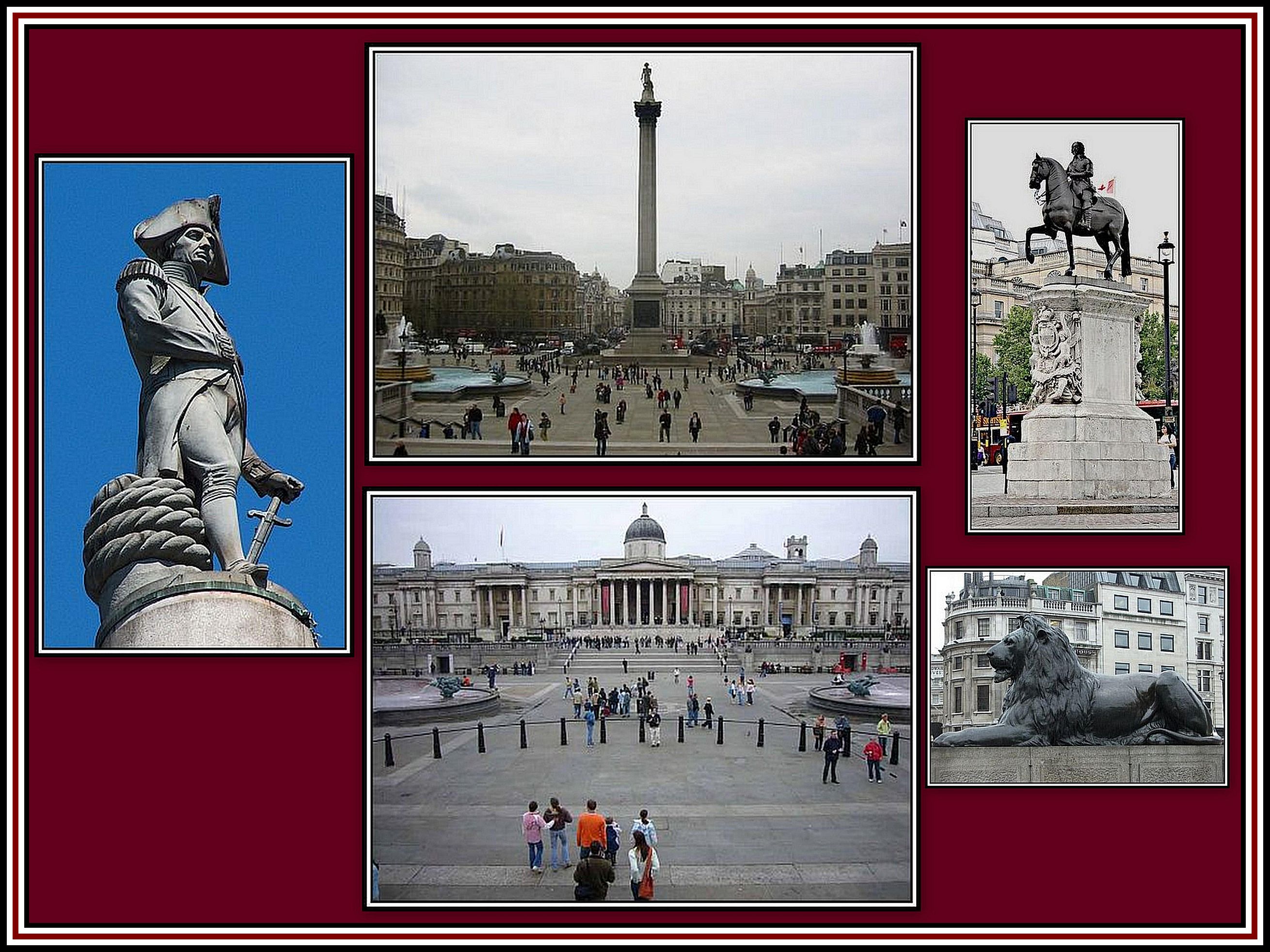POSTCARDS FROM OLD LONDON
PAGE TWO: ADDITIONAL POSTCARDS OF
TRAFALGAR SQUARE
by
DAVE HILL & CHARLES S.P. JENKINS
-oOo-
-oOo-
TRAFALGAR SQUARE DURING
WORLD WARS & FOLLOWING
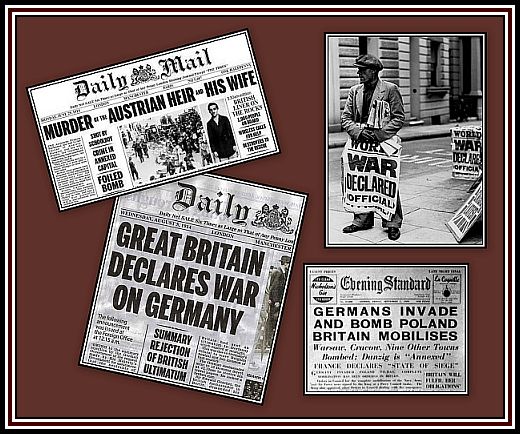
During the First World War, The Square was a site to recruit soldiers and a place to collect money to finance the war. Slogans such as Buy War Bonds and Feed the Guns were set up in The Square. As part of the Hate the Hun Campaign and encourage the sale of War Bonds, obsolete tanks were used as Tank Banks, which toured the country including The Square. These Tanks also displayed captured enemy guns, as an incentive to the public to exchange their savings for War Bonds.
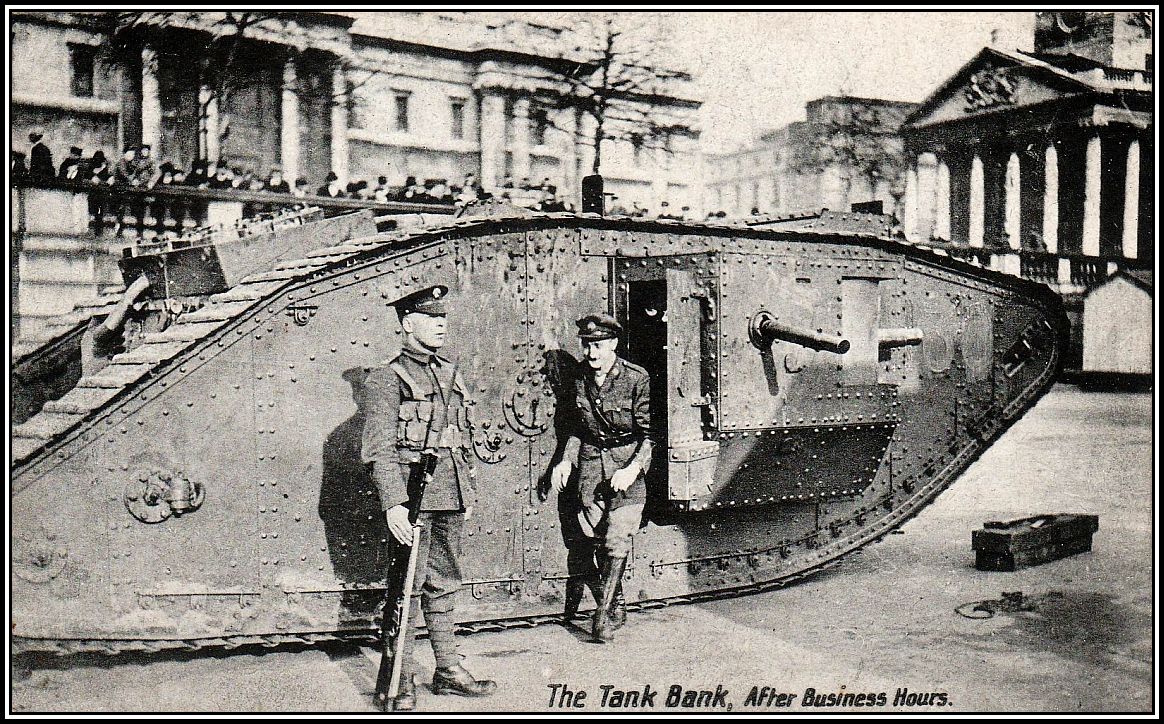 Postcard 3: A Tank Bank after business hours
Postcard 3: A Tank Bank after business hours
-oOo-
With the declaration of war, other structures were soon to appear in Trafalgar Square in an attempt to help support The War Effort by encouraging the public to purchase War Bonds. Such an example was the construction of an imitation shelled French village in The Square, which was to remain in place until October 1918. The structure consisted of a ruined farm, church and windmill. Photographic views of the village and of a Tank Bank were featured on postcards by the Sanbride and Valentine & Sons Companies:
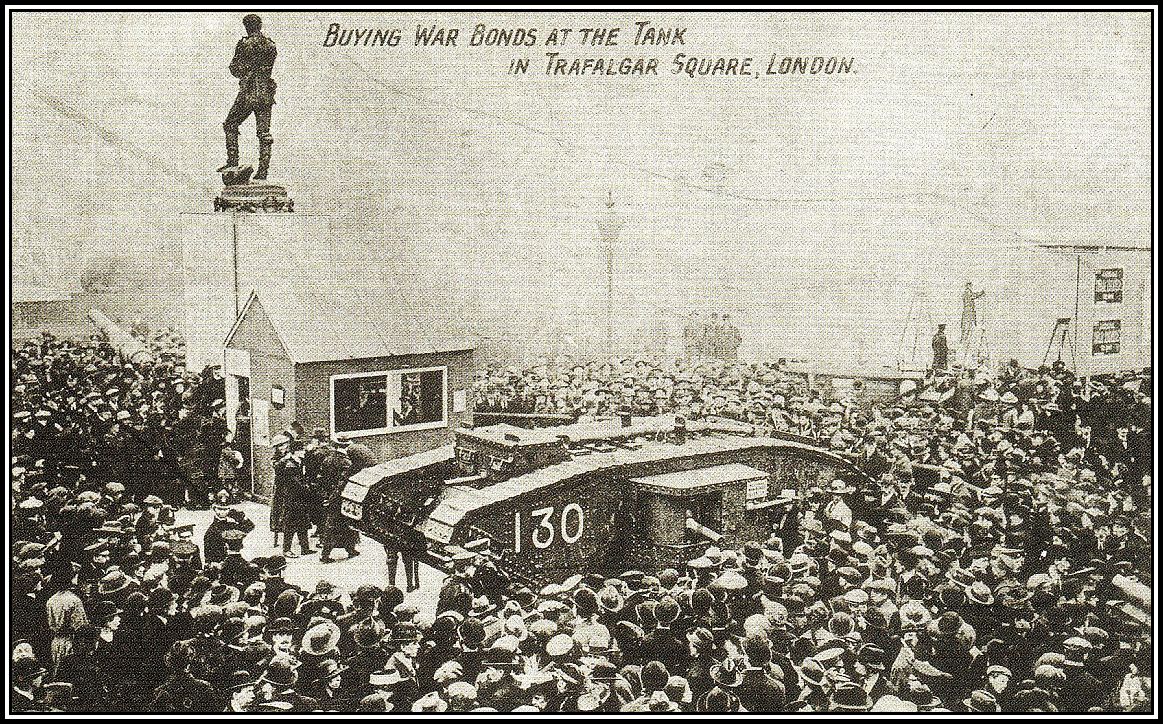 Postcard 4: Buying War Bonds at the Tank Bank in Trafalgar Square. The statue of General Gordon is seen in the background, and behind which was an imitation of a shelled French village showing a ruined farm, church and windmill (see following Postcards).
Postcard 4: Buying War Bonds at the Tank Bank in Trafalgar Square. The statue of General Gordon is seen in the background, and behind which was an imitation of a shelled French village showing a ruined farm, church and windmill (see following Postcards).
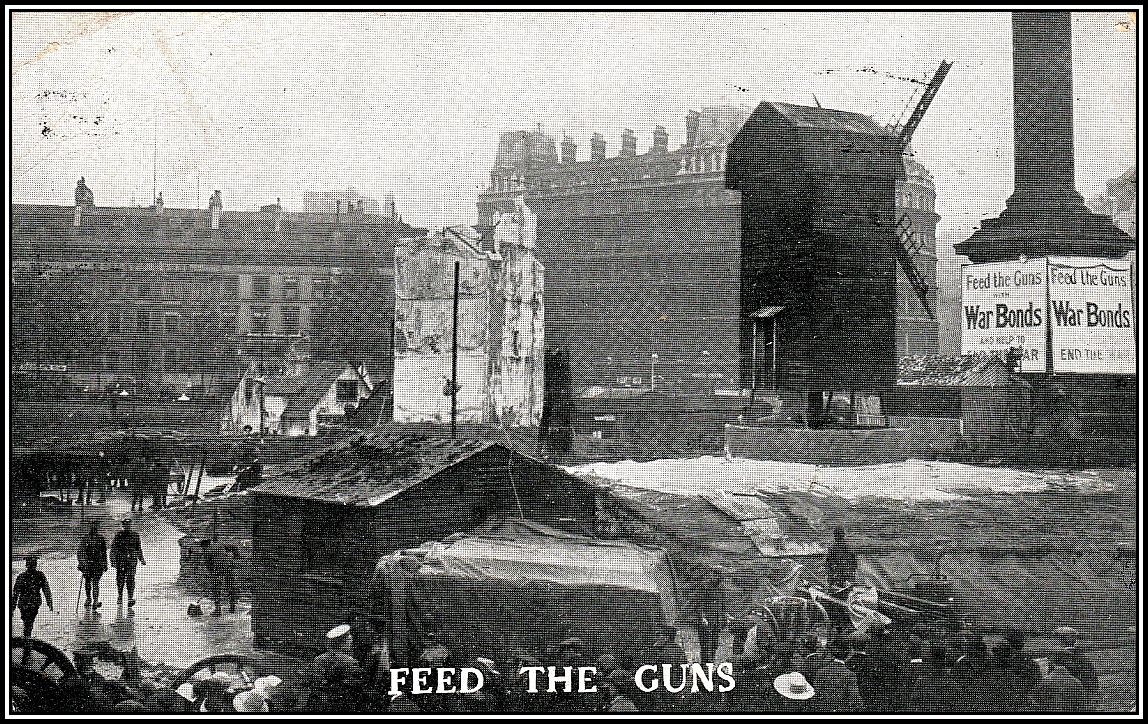 Postcard 5: Feed the Guns Postcard showing the ruined French Village in Trafalgar Square. Note the request to buy War Bonds and Feed the Guns posters attached to the base of The Column.
Postcard 5: Feed the Guns Postcard showing the ruined French Village in Trafalgar Square. Note the request to buy War Bonds and Feed the Guns posters attached to the base of The Column.
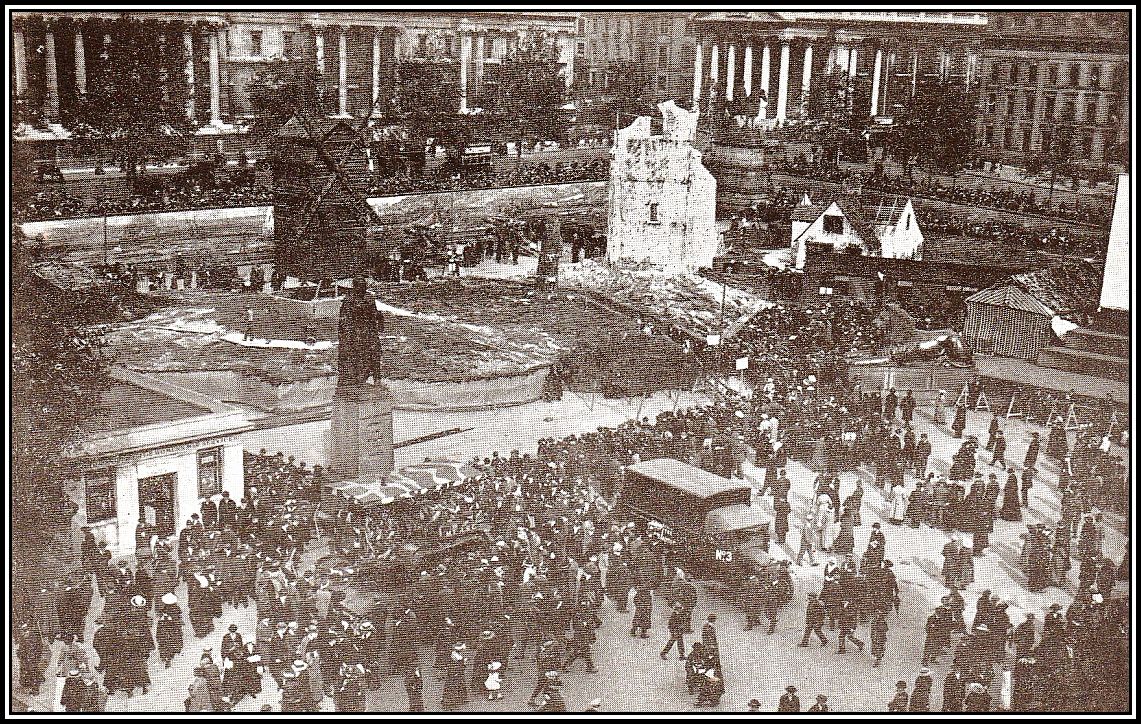 Postcard 6: The Ruined French Village and Windmill behind the statue of Major-General Gordon
Postcard 6: The Ruined French Village and Windmill behind the statue of Major-General Gordon
-oOo-
Click here to read about THE HOME FRONT during wartime
-oOo-
Governments issued War Bonds to help finance their military in times of war and were either sold directly to the public or traded on a Stock Market. Prior to the introduction of War Bonds, governments raised money to support their military exploits by borrowing from rich financiers. The term, War Bond, was first used for the raising of money by the U.S. Congress in 1812, but this was not aimed at the general public.
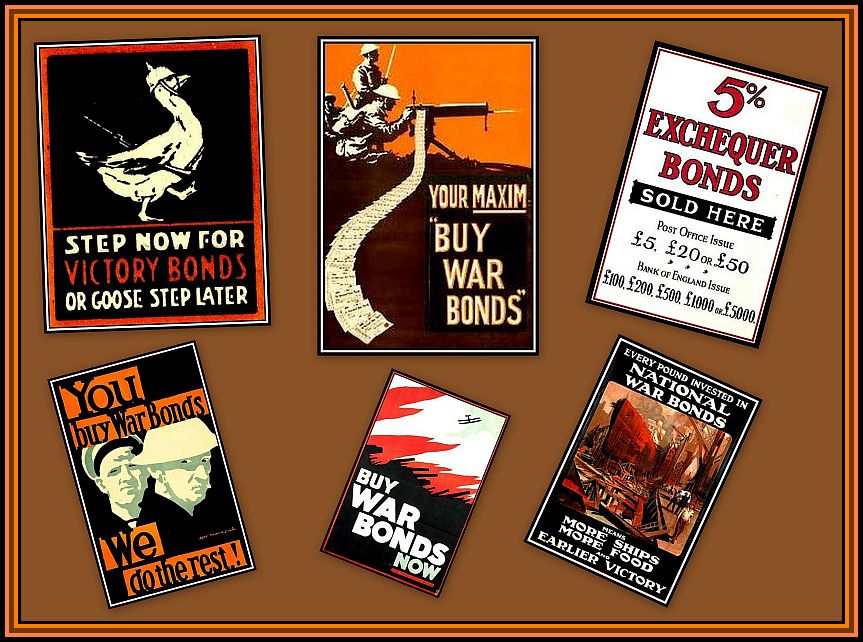
War Bonds or Loans were introduced in the U.K. in 1914. The government feared that with the declaration of war, there would be a run on the banks that would deplete the country of its gold reserves. To avoid this, the U.K. left the Gold Standard and issued £300 million of paper banknotes, which were not backed by gold, and could be used by banks to repay customers. These banknotes were essentially a War Loan free of interest. The first interest-bearing War Loan at 3.5% was also issued in 1914 and raised £333 million.
In 1916, the British Government offered the following advertisement to encourage the populace to purchase their Exchequer Bonds (5% interest):
LEND YOUR MONEY TO YOUR COUNTRY. The soldier does not grudge offering his life to his country. He offers it freely, for his life may be the price of Victory. But Victory cannot be won without money as well as men, and your money is needed. Unlike the soldier, the investor runs no risk. If you invest in Exchequer Bonds your money, capital and interest alike, is secured on the Consolidated Fund of the United Kingdom, the premier security of the world.
-oOo-
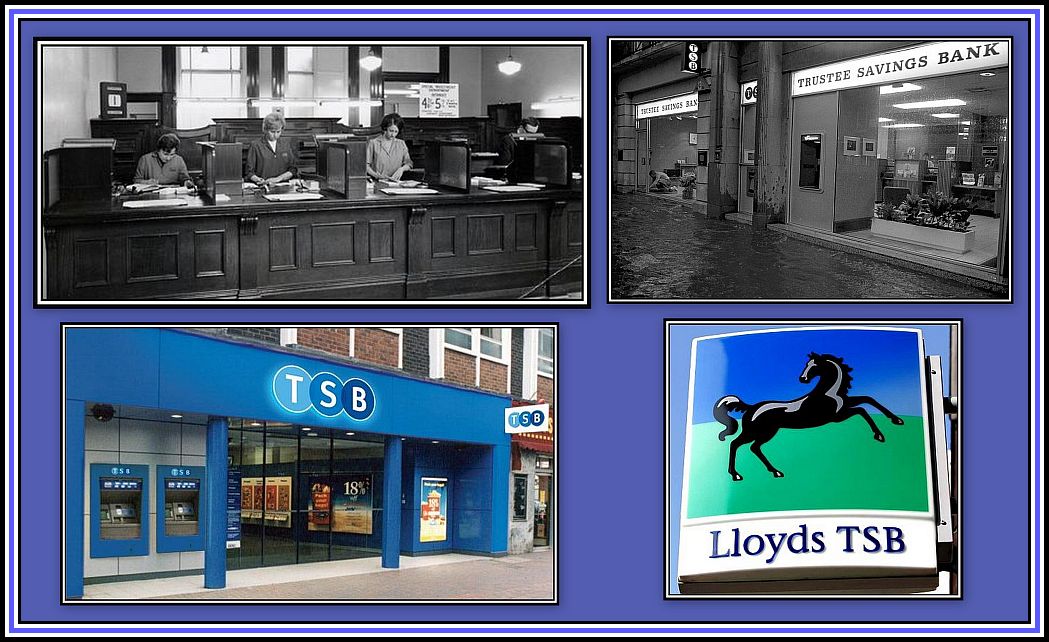 The Trustees Savings Bank (TSB) through the years
The Trustees Savings Bank (TSB) through the years
Top Left: Inside a branch during the 1950s; Top Right: A branch during the 1980s;
Bottom Left: a branch in the 2000s; & Bottom Right: today’s Logo
The TSB Group merged with Lloyds Bank in 1995
Also in 1916, the government launched The National Savings Movement to help raise money and which continued until 1978. A number of organisations made up the movement including the Trustees Savings Bank (founded in 1810) and the Post Office Savings Bank. Interestingly enough, one of the early symbols of The Movement was the Swastika, which was replaced by St. George slaying the Dragon once Nazi Germany adopted it as its symbol.
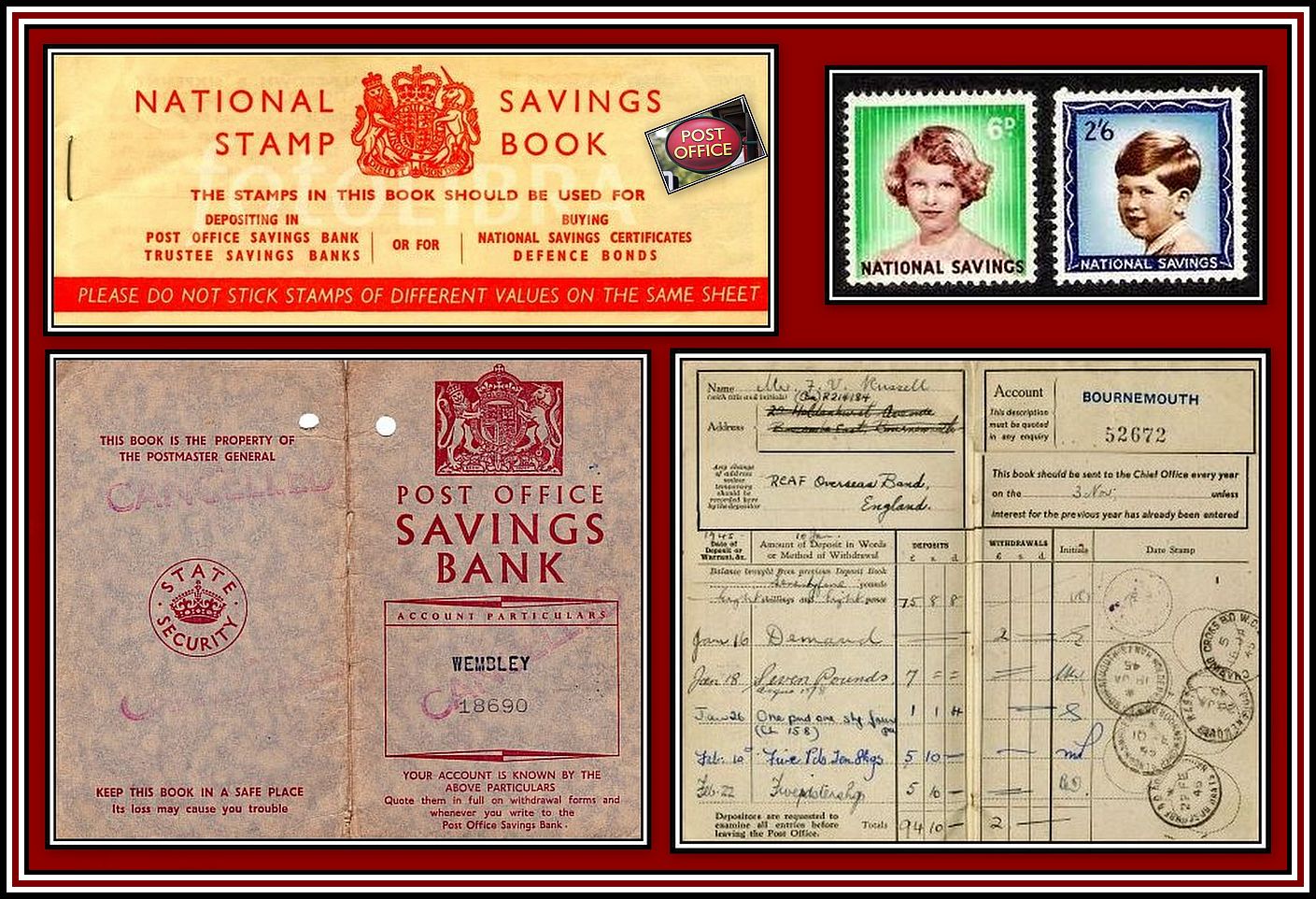
-oOo-,
During the First World War, a Recruiting Office was established by a woman’s group and constructed to the left (west) of Nelson’s Column. This small white building remained in place for some time after the signing of the Armnistice, but was eventually removed at some unknown time. The building is highlighted by the arrow in the following postcard produced by Rotary Photo Company.
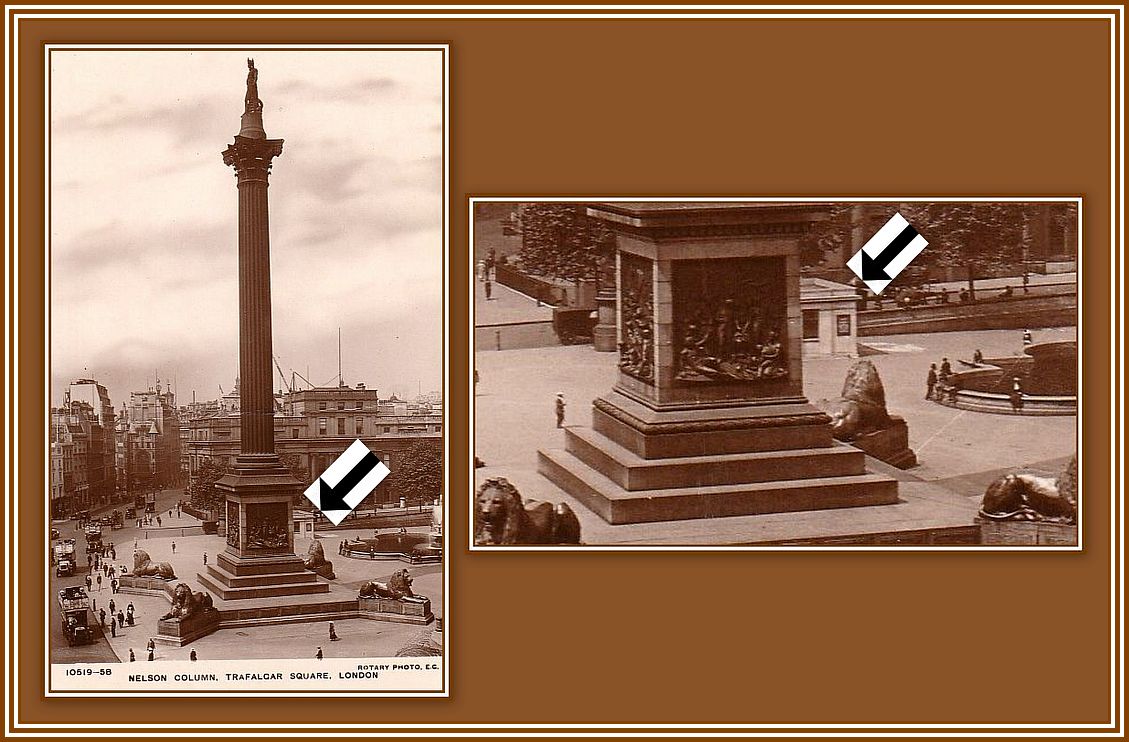 Postcard 7: Trafalgar Square post-The First World War showing the Recruiting Office
Postcard 7: Trafalgar Square post-The First World War showing the Recruiting Office
-oOo-
Postcard 8 shows Trafalgar Square after the First World War had come to an end. The postcard was produced by the Wildt & Kray Company and shows two small buildings to the right (east) of Nelson’s Column (arrow) that were built during war and which remained in place for some unknown time once hostilities ceased. This postcard also demonstrates the damage to the column’s steps to the left (west; arrow). The damage was caused by revelers while celebrating the Armnistise from their attempt to burn some of the captured enemy guns that had been on display in The Mall.
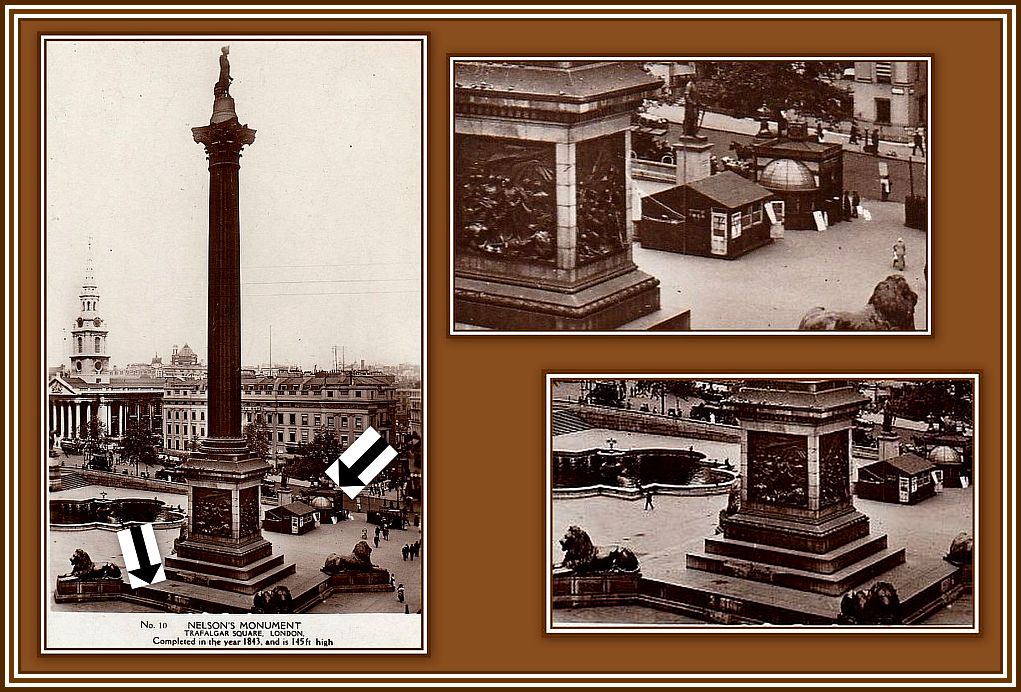 Postcard 8: Trafalgar Square showing remnants of the First World War period
Postcard 8: Trafalgar Square showing remnants of the First World War period
One of the small buildings shown here in Postcard 8 was a hut that was used by the Young’s Men’s Christian Association (YMCA) for the welfare of military personnel. The other building was a globe-like structure and found adjacent to the YMCA hut. According to Leonard Bentley, an ex-London policeman and historian, this structure had been used by the Bank of England for the sale of War Bonds.
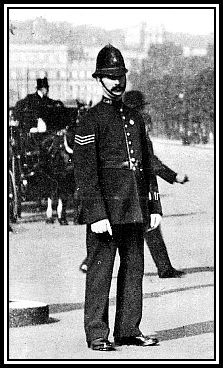 A Photograph of an Edwardian Policeman taken by Leonard Bentley
A Photograph of an Edwardian Policeman taken by Leonard Bentley
-oOo-
It was not until 1933 that Traffic Lights were introduced to Trafalgar Square. Prior to the installation of the twenty-two sets necessary, a total of eight policemen were required to control The Square’s traffic and to keep it moving in an orderly and safe manner. The following postcard is significant for the presence of Traffic Lights and also for the recently built (South) Africa House. (South) Africa House was built on the site of Morley’s Hotel and was opened in 1933 by King George V (1865-1936).
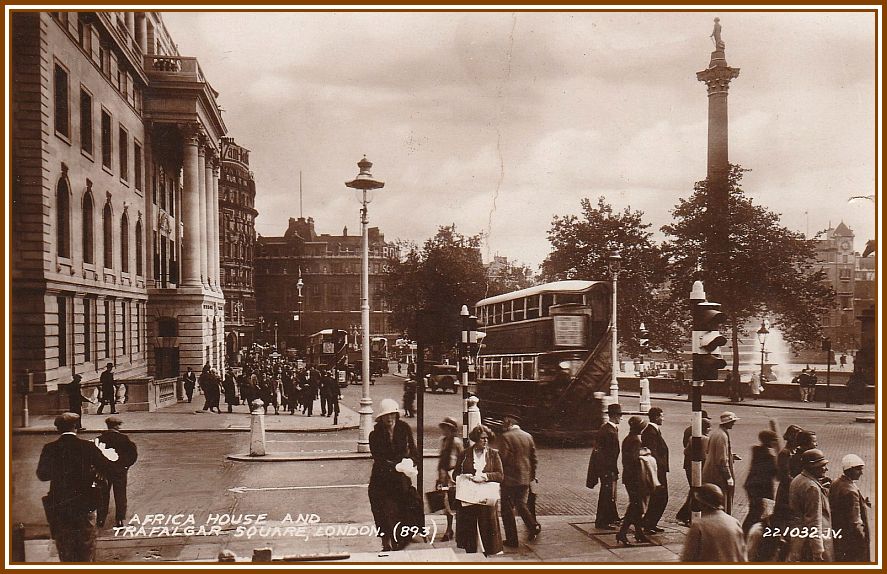 Postcard 9: Trafalgar Square now with Traffic Lights and showing (South) Africa House
Postcard 9: Trafalgar Square now with Traffic Lights and showing (South) Africa House
It is interesting to note that during the wartime, kerbs and bollards were painted with black & white stripes in order to be seen in blackout. Despite Traffic Lights and painted kerbs etc, more people lost their lives in traffic accidents that those killed by enemy bombs.
-oOo-
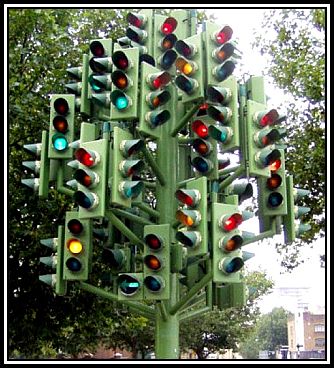 The Traffic Light Tree, Canary Wharf, Docklands, London
The Traffic Light Tree, Canary Wharf, Docklands, London
The first Traffic Light was based on a semaphore system and was introduced in London in 1868 by John Peake Knight (1828-1886), an engineer and railway manager.
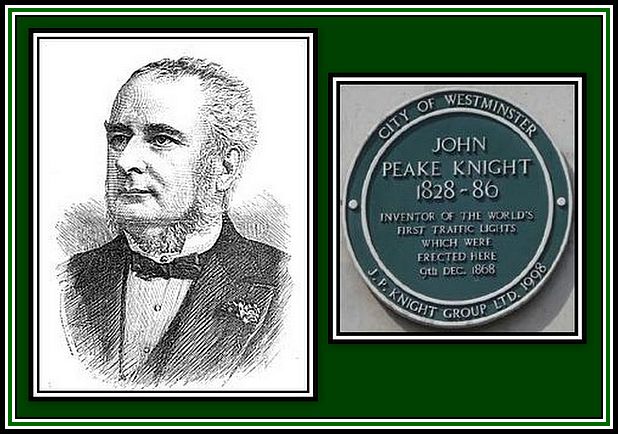 John Peake Knight & The Plaque that was placed close to where the first Traffic Light was installed
John Peake Knight & The Plaque that was placed close to where the first Traffic Light was installed
Unfortunately it was not a success. It was a manually operated gas-lit device that exploded within a month of installation causing injury to the police operator. The first electric traffic light was developed by a policeman, Detective Lester Wire (1887-1958), and was introduced in Salt Lake City, Utah in 1912 and used red and green lights. In 1917, the first interconnected traffic signal city was introduced in Salt Lake City and allowed six connected intersections to be controlled by one manual switch. The automatic control of interconnected lights first appeared in Houston, Texas in 1922, but it was not until 1926 that the traffic light was introduced into the U.K. at Piccadilly Circus.
To read more about the History of the Traffic Light, please click here
-oOo-
With the declaration of the Second World War, three surface air raid shelters were built behind Nelson’s Column and the fountains and remained in place until the war ended. A number of posters were place on The Square exhorting the populace to Lend a Hand on the Land. These posters may be seen on the following postcard by C. Richter.
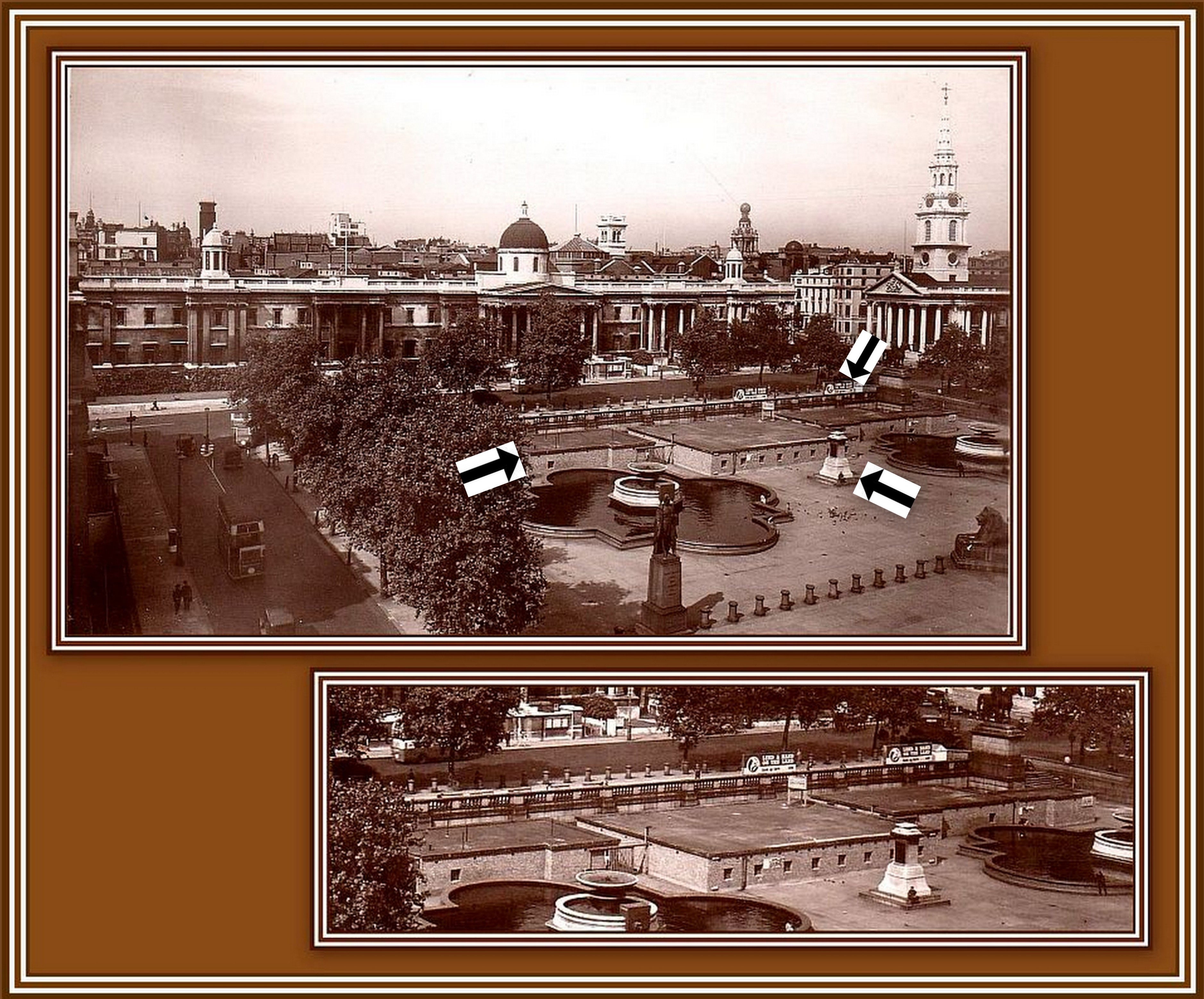 Postcard 10: (Top) Trafalgar Square during the Second World War showing Posters;
Postcard 10: (Top) Trafalgar Square during the Second World War showing Posters;
and (Bottom) Detail of the three Above-Ground Air Raid Shelters and the empty pedestal where the statue of Major-General Gordon once stood
-oOo-
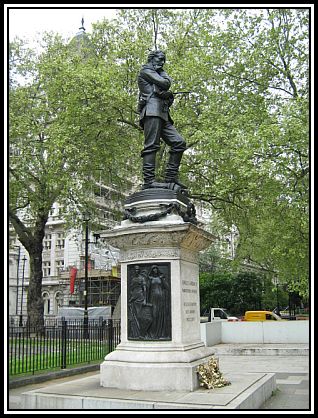 The Statue of Major-General Gordon originally erected in Trafalgar Square
The Statue of Major-General Gordon originally erected in Trafalgar Square
The statue of Major-General Gordon (1833-1885), which had been placed here in The Square between the two fountains in 1888 and was the work of Hamo Thornycroft (1850-1925). It was removed in 1943 during the Second World War and was put into storage.
In 1948, Winston Churchill (1874-1965) argued in favour of the statue’s return to The Square, but to no avail. However, in 1953, with a greatly reduced pedestal, it was finally reinstalled on the Victoria Embankment. An identical statue complete with full pedestal may be seen in Gordon Reserve, a small park near Parliament House in Melbourne.
-oOo-
The following postcard, Postcard 11, dates from 1952, but in actually dates from just after the end of the Second World War. Here, one can clearly see that the kerbstones and bollards are still painted with black & white stripes, as they were during wartime. In addition, it may be noted that the equestrian statue of Charles I (1600-1649) had not as yet been returned to its plinth on the traffic island in front of Nelson’s Column.
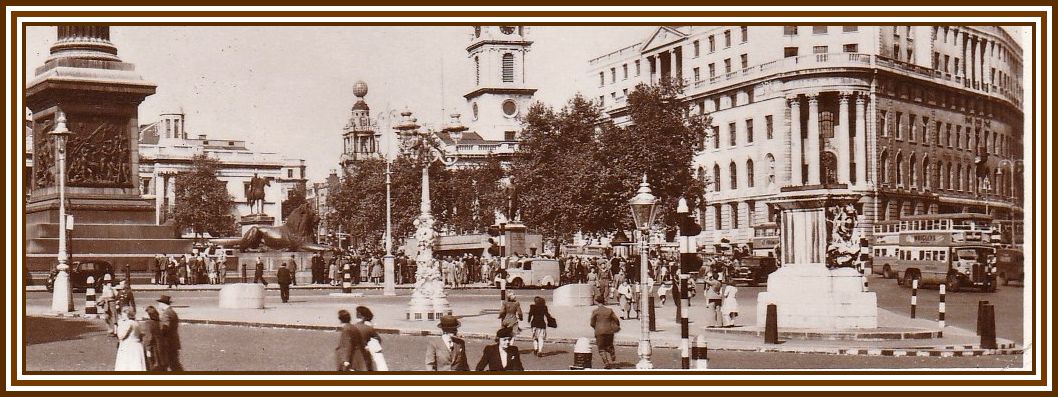 Postcard 11: Trafalgar Square showing the empty pedestal
Postcard 11: Trafalgar Square showing the empty pedestal
where the statue of Charles I stood
-oOo-
The equestrian statue of Charles I at Charing Cross/Trafalgar Square was the work of Hubert Le Sueur (1580-1658) and was cast in 1633. Its placement is on the former site of an Eleanor Cross that had been erected by Edward I (1239-1307). The statue was erected so as to face Whitehall, the site of his execution on 30th January, 1649 by beheading following conviction of high treason.
The site of erection of the statue of Charles I (i.e. Charing Cross) is defined as being the Centre of London and a plaque placed adjacent to the statue indicates that road distances from London are measured from this point.
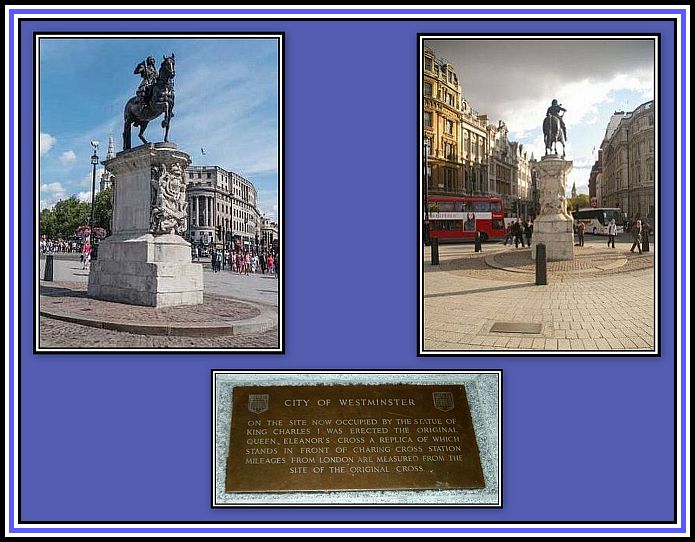 The Centre of London
The Centre of London
Left, The statue of Charles I; Right, Rear View facing Whitehall; and
Centre: Plaque defining the Centre of London and where the Eleanor Cross once stood
-oOo-
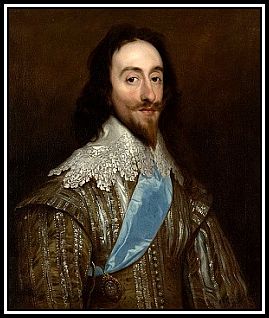 Portrait of Charles I painted by Daniel Mytens (1590-1647)
Portrait of Charles I painted by Daniel Mytens (1590-1647)
Charles I created a split between the monarchy and Protestant subjects when he married Henrietta Maria (1609-1669), a French Catholic princess.
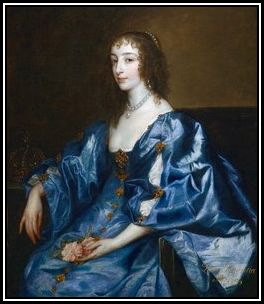 Henrietta Maria of France
Henrietta Maria of France
As a result of Parliamentary opposition and unrest, the king dissolved Parliament on a number of occasions, and in 1629, he chose to rule without the assistance of Parliament altogether. This led to the outbreak of the English Civil War (1642-1651), which in fact consisted of three wars: the first, from 1642-1646; the second, from 1648-1649; and the third, from 1649-1651.
The opposition or Parliamentarians (aka Roundheads) were led by Oliver Cromwell (1599-1658) who won several important victories against Charles I and his forces in 1644 and 1645. The wars came to an end at the Battle of Worcester on 3rd September, 1651 with a Parliamentarian victory. This led to the trail and execution of Charles I before the Banqueting Hall of the Palace of Whitehall and the replacement of the English monarchy with the Commonwealth of England (1649-1653) and then the Protectorate under the rule of Oliver Cromwell.
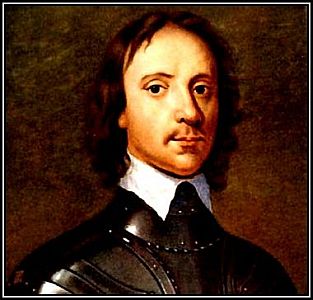 Oliver Cromwell
Oliver Cromwell
The Civil Wars (1642-1651) established the precedent that an English monarch could no longer govern without Parliament’s consent. The concept of Parliament as the ruling power of England was established later in 1688 as part of the Glorious Revolution.
After the Parliamentary victory in The Civil Wars, the statue was removed and sent to a metal smith with instructions to break it up. However, the statue was taken and hidden. Following the Restoration (1660) the statue was discovered and sold to Charles II (1630-1685) in April 1675 and, after suitable repairs were made, placed at Charing Cross in 1676 thereby predating the construction of Trafalgar Square. The pedestal was of Portland Stone and carved with a coat of arms and was the work of Joshua Marshall (1629-1678).
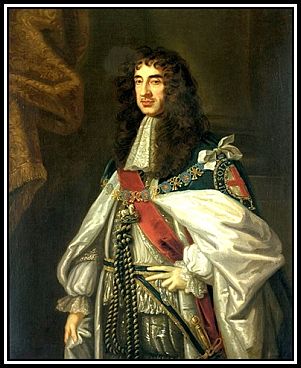 Portrait of Charles II by Sir Peter Lely (1618-1680)
Portrait of Charles II by Sir Peter Lely (1618-1680)
During the Second World War, the statue was removed and stored at Leighton Buzzard while the plinth remained protected by brickwork. A bronze tablet was added to the base of plinth to explain the various replacements needed to return the statue to its former glory.
-oOo-
The Square was one of the main sites where the public congregated to bring in the New Year. Revelers often climbed on the lions and jumped into the fountain ponds until the authorities had them drained prior to the celebrations.
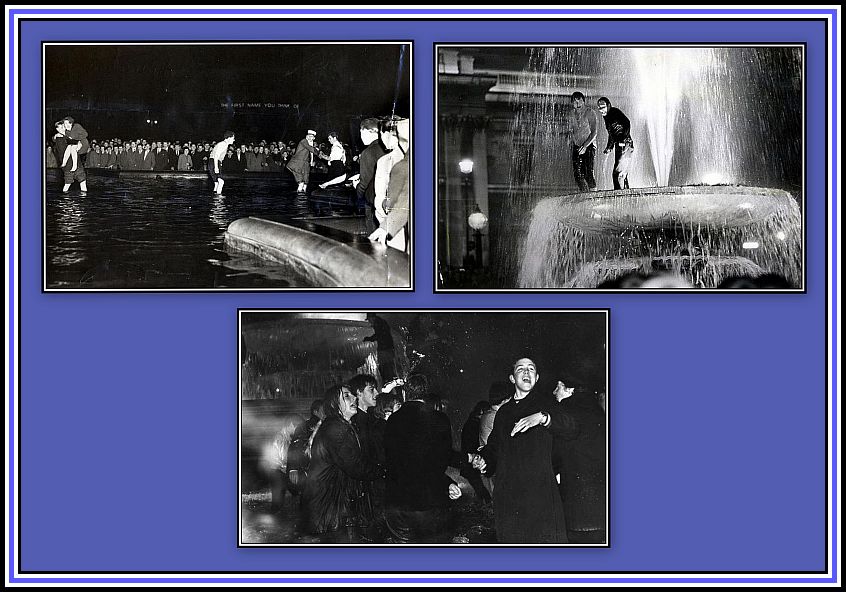
-oOo-
Trafalgar Square has also been the site of numerous rallies of all types ranging from demands to end various wars ……. to opening a second front during the Second World War ……. To rallies in support of numerous political policies and ideals ……. As well as those demanding food and pay increases.
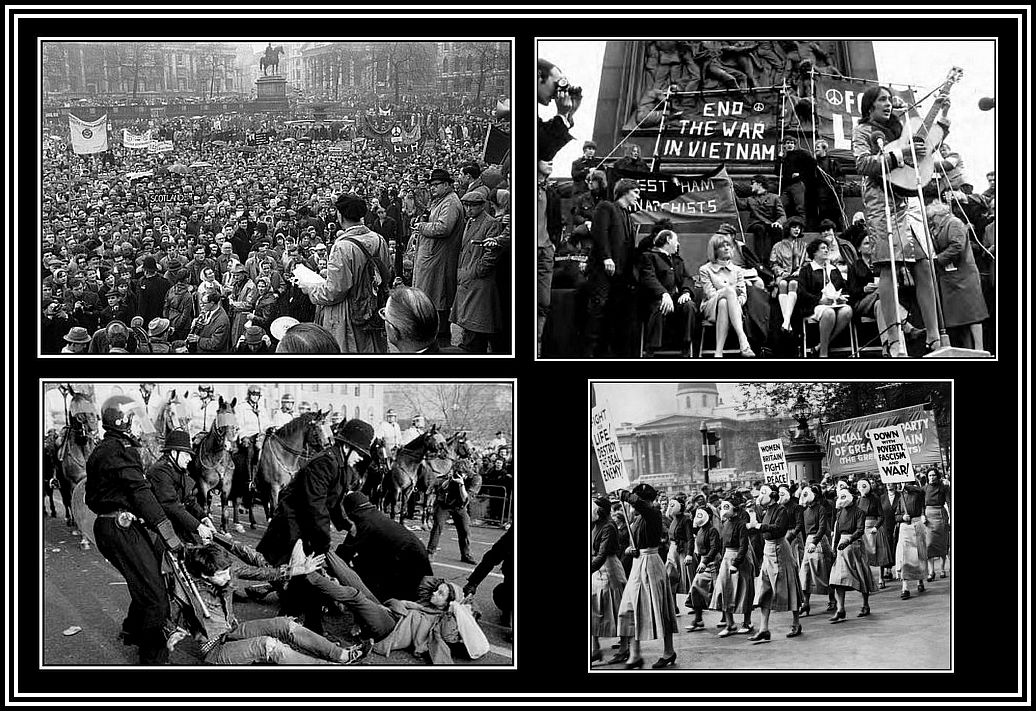 Demonstrations
Demonstrations
-oOo-
In addition, there is one particular gathering that I remember attending as a child, which was held on a Saturday afternoon in 1954 and was headed by Billy Graham (1918-2018) during his crusade to the U.K.
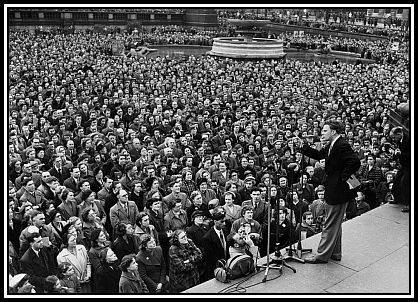 Billy Graham in Trafalgar Square, 1954
Billy Graham in Trafalgar Square, 1954
-oOo-
This final postcard (Postcard 12) from the company, Raphael Tuck & Sons, is shows Northumberland Avenue with Nelson’s Column in the distance. To the right, on Northumberland Street (arrow), is a tall chimney. We have been unable to identify this structure, but can suggest that it belonged to a brewery once present on the site.
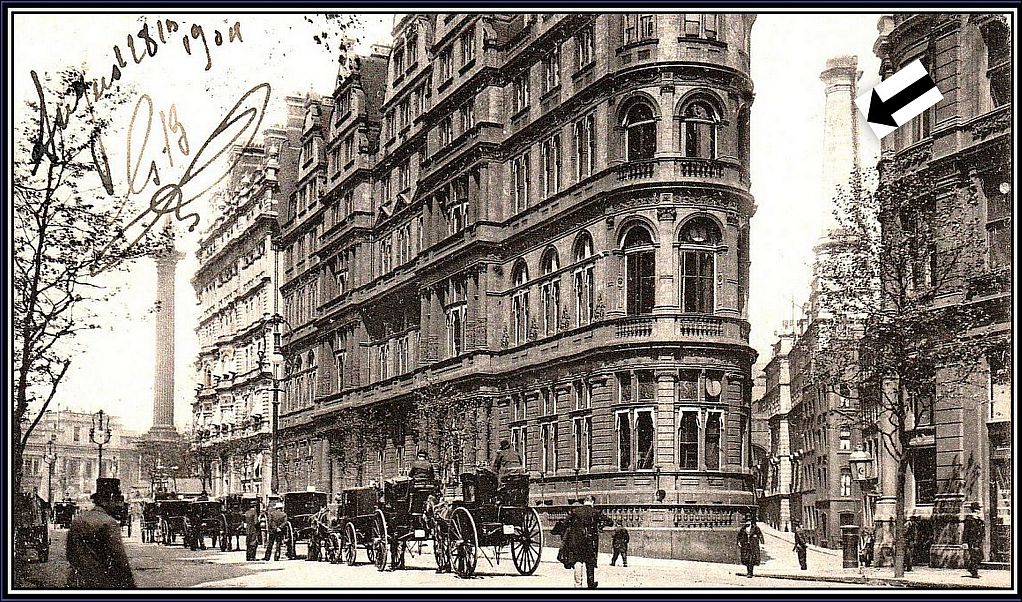 Postcard 12: Northamberland Avenue, 1904
Postcard 12: Northamberland Avenue, 1904
-oOo-
Like many open sites in big cities, Trafalgar Square is home to a huge number of pigeons. Despite the mess left by the birds, tourists have always enjoyed buying corn from sellers in order to feed them and have their photographs taken with them. When Ken Livingstone (1945) was Mayor of London (2001-2008), the matter of the pigeons came to a head and he had the corn-sellers banned and hawks introduced to The Square to scare the birds away, hopefully leaving a reduced number. Today, the feeding of birds in Trafalgar Square is banned and with a hefty fine in place for anyone caught doing so!
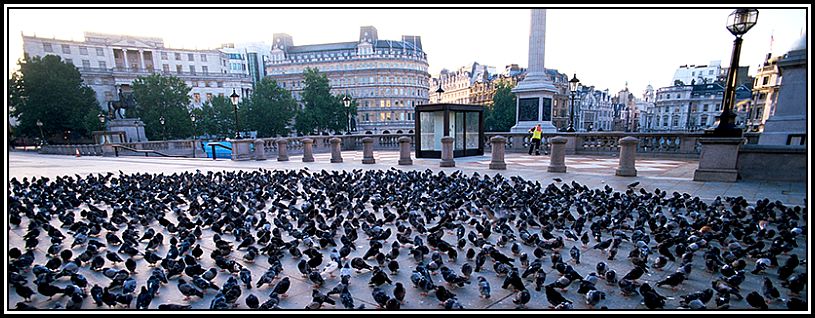
-oOo-
Traffic has always been busy around The Square. In 2000, efforts began to be proposed and put into practice in order to restrict traffic in Central London. One such plan was to turn the north side of The Square in front of the National Gallery into a pedestrian walkway. As a result, all traffic is now diverted to the remaining three sides of The Square.
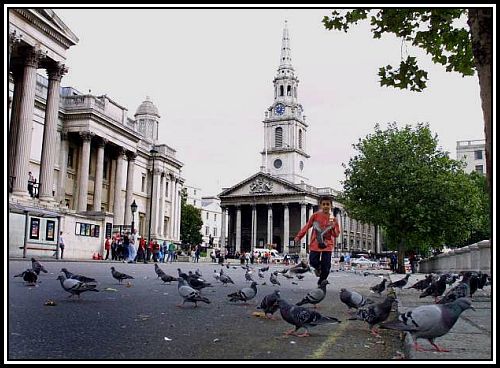 The North Side of Trafalgar Square with the Church of St. Martin-in-the-Fields at the far end and
The North Side of Trafalgar Square with the Church of St. Martin-in-the-Fields at the far end and
The National Gallery on the left
-oOo-
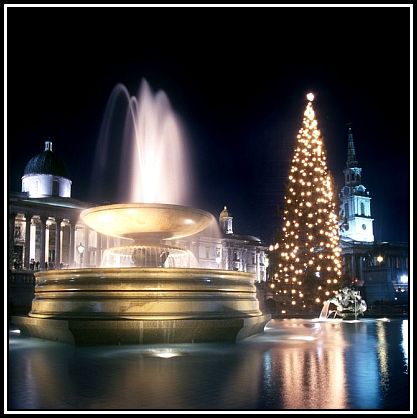
Each year since 1947, a Christmas Tree is sent to London as a gift from the people of the city of Oslo in Norway. The tree, 50-60 year old Norway Spruce (Picea abies) of approximately 20 metres is a token of gratitude for British Support during the Second World War and this is noted in a plaque placed at the foot of the tree. The tree is displayed in Trafalgar Square and decorated in a traditional Norwegian style and adorned with five hundred low wattage halogen bulbs. The lighting of the tree takes place on the first Thursday in December in a ceremony led by the Mayor of Westminster together with carol singing. Illumination of the tree continues until the 6th of January (Epiphany; Twelfth Night) when it is removed, chipped and turned into mulch and recycled.
——oooOOOooo——
——oooOOOooo——
Click here to RETURN to TRAFALGAR SQUARE
——oooOOOooo——
Click here to RETURN to the POSTCARDS FROM OLD LONDON Home Page
——oooOOOooo——
Click here to GO to the AN ADDITIONAL SET OF POSTCARDS OF OLD LONDON
——oooOOOooo——
Click here to RETURN to the TABLE OF CONTENTS
-oOo-
Readers can TWEET their LIKES & DISLIKES to me at
or
make comments on the Website’s FACEBOOK PAGE
or
consider leaving a Comment at the end of each tale.
——oooOOOooo——

